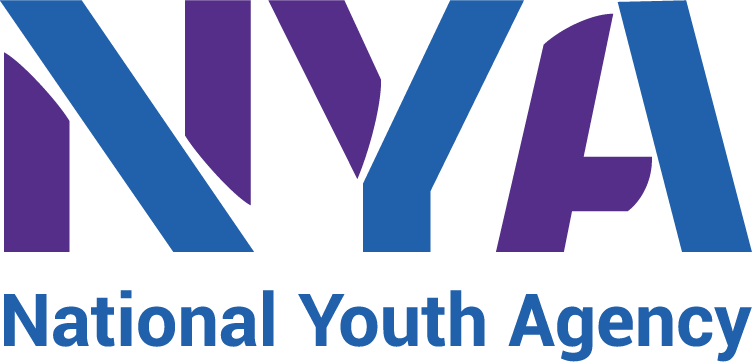The Hub provides guidance, support, advice and access to training resources for all organisations and individuals working with young people – whether you’re a volunteer, a trustee, a youth worker or an organisational lead.

About safeguarding
Keeping young people safe should be the top priority of anyone working with them. It’s vital that the spaces they are in are safe and that the people they are in contact with are trustworthy. All content for the Safeguarding Hub is created and maintained by our safeguarding and risk experts.
If you’re unable to find what you’re looking for or would like to talk to a member of our team for information around safeguarding in your organisation you can contact us via email: safeguarding@nya.org.uk We aim to respond to all enquiries within 72 hours.
Why is it needed?
Our hub provides a wide range of free resources to all those that need them, helping to ensure that all young people have access to safe services, support and care.
It is not intended to replace established systems that youth organisations have already developed. It is primarily aimed at those who have limited access to such resources, specialist knowledge or established practice.
Featured training courses
Designated Safeguarding Lead training for the youth sector
Tailored for those working with 8-24-year-olds and holding safeguarding responsibilities in a youth work setting, this two-day intensive in-person training equips you for the pivotal role of Designated Safeguarding Lead. It will equip you with the knowledge and tools to effectively foster a young person centred safeguarding culture, to elevate awareness of safeguarding and child protection issues within your organisation.
Risk assessment for youth programmes
This course brings risk assessments to life, highlighting why they are so much more important than the ‘tick-box exercise’ they sometimes have a reputation for being. You’ll take away sector-specific examples of good practice you can implement straight into your setting, as this course has been written especially for the youth sector.
Delivered by NYA’s risk management partners, Pharos Response; the crisis management experts who know only too well what happens when risks aren’t managed effectively.
What can you find in the Hub?
The hub is divided into two sections – resources and training courses.
The resources are arranged into four key areas:
- Safe People
- Safe Place & Activities
- Safe Policy, Process & Procedure
- Safe Equipment & Resources.
You can also use the search bar to find a particular topic.
Featured resources
Safeguarding standards for the youth sector
These standards have been designed to support good safeguarding practices for all those working with children and young people.

Keeping Young People in Sight: Designated Safeguarding Leads in the Youth Sector
Guidance on young people’s known and emerging needs.

The resources
| Image | Title | Summary | Link | hf:doc_categories | hf:doc_tags |
|---|---|---|---|---|---|
 | Gender Inclusive Environment in Youth Settings | When working with young people who are exploring their gender, it is important that their needs and rights are protected equally alongside those of their non-gender-questioning peers. | safe-people safe-places-and-activity safe-policy-process-and-procedure safeguarding-hub | guidance | |
 | Safeguarding Standards for the Sector | The Safeguarding Standards for the youth sector have been designed to support good safeguarding practices for all those working with children and young people. | safe-equipment-and-resources safe-people safe-places-and-activity safe-policy-process-and-procedure safeguarding-hub | guidance policy procedure templates | |
 | Youth Work in Private Dwellings Report | This important resource provides a useful reference for those commissioning youth work to ensure that their provision meets the optimum standards for safeguarding. | safe-equipment-and-resources safe-people safe-places-and-activity safe-policy-process-and-procedure safeguarding-hub | guidance | |
 | The Role of a Designated Safeguarding Lead | This guidance talks about the purpose, roles and responsibilities of an individual that has been named the operational safeguarding lead for the organisation. | safe-people safeguarding-hub | guidance | |
 | Online Delivery – Policy and Guidance | This document offers a simple checklist of things you will want to take into account when delivering youth work online. | safe-places-and-activity safeguarding-hub | guidance policy | |
 | Setting Up Your Safeguarding Culture Guidance | This guidance is designed to facilitate good thinking in relation to developing a robust and effective safeguarding culture. It is written as a thought piece. | safe-people safeguarding-hub | guidance | |
 | Manual Handling | The term manual handling covers a wide variety of activities including lifting, lowering, pushing, pulling and carrying, all of which present a risk of injury if not managed appropriately. | safe-equipment-and-resources safeguarding-hub | guidance | |
 | Workforce information | Employers are legally required to provide information, instruction, training and supervision as is necessary to ensure, so far as is reasonably practicable, the health and safety at work of employees. | safe-people safeguarding-hub | guidance | |
 | Worker Supervision Policy | Supervision is a key element of staff development for all team members, paid or unpaid. Team meetings and mentoring also form part of quality support and supervision. | safe-people safeguarding-hub | policy | |
 | Worker Supervision Agreement | Supervision is a two-way process, whereby the supervisor ensures the worker is accountable and is able to carry out their duties as effectively as possible. | safe-people safeguarding-hub | templates | |
 | Worker Competency | Competence is situational meaning that a worker who may be competent in one role, activity or particular group of young people may not be competent in another. | safe-people safeguarding-hub | guidance | |
 | Whistleblowing Policy and Procedure | This whistleblowing policy and procedure applies to all who work and volunteer with your organisation. It outlines when, and how, to raise any genuine and serious concerns. | safe-people safeguarding-hub | policy | |
 | Welfare | All health and safety processes included in this document apply equally to both workers as well as young people. | safe-people safeguarding-hub | guidance | |
 | Weather | Youth work organisations should consider the potential effects of adverse weather when planning youth sector activities. | safe-places-and-activity safeguarding-hub | guidance | |
 | Transport | This guidance focuses upon private hire and self-drive road transport and not other methods such as rail, air or ferry. | safe-equipment-and-resources safeguarding-hub | guidance | |
 | Transference of Risk | Transference of risk is when an employee has committed a criminal offence or come into contact with a concern within their personal life. | safe-people safeguarding-hub | guidance | |
 | Transference of Risk Assessment form | This template can be downloaded and filled in to assess Transference of Risk. | safe-people safeguarding-hub | templates | |
 | Supporting Individual Needs | It is essential that youth work organisations understand the individual support needs of all individuals participating in programmes or accessing services in advance, including young people and workers. | safe-people safeguarding-hub | guidance | |
 | Supervision | Supervision can be provided directly, indirectly (within clear boundaries) or remotely. Workers should always ensure that arrangements are appropriate for each role. | safe-people safeguarding-hub | policy | |
 | Staff Conduct Policy | As a Youth Worker working in the organisation – whether as a member of staff or a volunteer – you have a responsibility to ensure that everyone attending activities are … | safe-people safeguarding-hub | policy | |
 | Safety Monitoring and Audit | Effective safety management is normally delivered using a systems-based approach and an important component of this is monitoring and review. | safe-policy-process-and-procedure safeguarding-hub | guidance | |
 | Safety Briefings | It is good practice for all workers, particularly those working directly with young people, to receive a structured briefing at the beginning of any programme and/or after any significant change. | safe-policy-process-and-procedure safeguarding-hub | guidance | |
 | Safeguarding Concern / Incident Report Template | This is a word document version of a Safeguarding concern / incident report template for your use | safe-people safeguarding-hub | templates | |
 | Safeguarding Governance Guidance | The aim of this guidance assists you to ensure your organisation effectively oversees the application of safeguarding. This guidance is primarily for anyone in the voluntary sector. | safe-policy-process-and-procedure safeguarding-hub | guidance | |
 | Safeguarding for youth work | This document outlines safeguarding policy and procedures for the protection of children and young people at risk. | safe-people safeguarding-hub | guidance policy procedure | |
 | Safe Recruitment Policy | Safe recruitment means taking steps to ensure only individuals who are suitable for working with young people, whilst keeping them safe from harm and risks, are appointed. | safe-people safeguarding-hub | policy | |
 | Risk Assessment Template | This is a word document version of a Risk Assessment Template | safe-places-and-activity safeguarding-hub | templates | |
 | Risk Assessment Process | Risk assessments should always be considered in the context of the potential benefits of the specific programme, location or activity for the young people participating. | safe-policy-process-and-procedure safeguarding-hub | procedure | |
 | Residential Venues | When using residential venues that are not owned or managed by the youth work organisation, workers should ensure that procedures are in place to manage the safety of young people. | safe-places-and-activity safeguarding-hub | guidance | |
 | Public Spaces and Outreach Work | When using public spaces to deliver organised and scheduled youth programmes or services youth work organisations need to consider a number of factors to manage risk effectively. | safe-places-and-activity safeguarding-hub | guidance | |
 | Position of Trust Guidance | The aim of this guidance is to outline the legal requirements associated with having a legally defined position of trust and offer best practice guidelines. | safe-people safeguarding-hub | guidance | |
 | Policy for Recruitment of Candidates with a Criminal Record | This is an example organisational policy for the recruitment of candidates with a criminal record. | safe-people safeguarding-hub | policy | |
 | Medication | Youth work organisations should ensure that they have a policy and procedures in place for managing young people’s personal medication. | safe-people safeguarding-hub | guidance procedure | |
 | Media consent form | This is an example template of a media consent form to collect young people’s media permissions. | safe-policy-process-and-procedure safeguarding-hub | templates | |
 | Lone Working Policy | This policy has been designed as a source of advice for the managers of staff who may be required to lone work within the Youth Work organisation. | safe-people safeguarding-hub | policy | |
 | Large events | Youth work organisations should pay particular attention to the safety management of large scale events. | safe-places-and-activity safeguarding-hub | guidance | |
 | Insurance Overview | Insurance is designed to mitigate against financial loss or claims for compensation and, in most cases, the requirement will depend on what services are being provided. | safe-policy-process-and-procedure safeguarding-hub | guidance | |
 | Informed consent | Youth work organisations are legally required to inform workers and others affected by their services of the potential health and safety risks that they may be exposed to. | safe-policy-process-and-procedure safeguarding-hub | guidance | |
 | Incident Reporting | An incident is any unplanned event that could result in injury or ill health, damage or loss to property, including data losses and/or a negative impact on reputation | safe-policy-process-and-procedure safeguarding-hub | procedure | |
 | Incident & near miss – Report Form Template | The following form is provided as a template only and must be customised as required by the youth work organisation. | safe-places-and-activity safeguarding-hub | templates | |
 | Health and Safety Policy | A health and safety policy provides a youth work organisation the opportunity to detail what it will do to manage health and safety. | safe-policy-process-and-procedure safeguarding-hub | policy | |
 | Health and Safety: Introduction to the Legal Background | Whilst the aims of youth programmes will vary, safety should always be a core consideration. The benefits gained from well planned activity will normally be clear to see. | safe-policy-process-and-procedure safeguarding-hub | policy | |
 | Guidance on Personal, Professional and Environmental Boundaries | This guidance explores the value of boundaries and offers guidance for developing, promoting, and maintaining healthy boundaries in a youth work role and setting. | safe-people safeguarding-hub | policy | |
 | Group Management | Workers have a duty of care for young people and for each other during youth programmes, events and activities. | safe-people safeguarding-hub | guidance | |
 | Food safety | All youth work organisations, regardless of the extent to which they prepare or supply food, should consider and apply principles of good food hygiene and safety. | safe-places-and-activity safeguarding-hub | policy | |
 | Example transport provider checklist | This is an example of a completed transport provider checklist. | safe-places-and-activity safeguarding-hub | templates | |
 | Example Risk Assessment | This is an example of a completed Risk Assessment for a youth activity | safe-places-and-activity safeguarding-hub | templates | |
 | Example general third party checklist | This is an example third party provider checklist to refer to when creating your own third party checklists. | safe-people safe-places-and-activity safeguarding-hub | templates | |
 | Example consent form template | This is an example of a consent form template for young people to take part in youth work activities. | safe-policy-process-and-procedure safeguarding-hub | templates | |
 | Example Accommodation Inspection Checklist | This is an example accommodation inspection checklist to refer to when creating your own checklists. | safe-places-and-activity safeguarding-hub | templates | |
 | Equipment safety | The information included within this resource applies to any equipment used during youth work activity, either by young people themselves or the workers who are with them. | safe-equipment-and-resources safeguarding-hub | guidance | |
 | Electrical Safety on Youth Work Programmes | Electricity and the use of electrical equipment presents a significant risk on youth work programmes the potentially high severity of consequence which may result from poor practice. | safe-equipment-and-resources safeguarding-hub | guidance | |
 | Due Diligence for Suppliers and Partners | This guidance outlines why due diligence of partners and suppliers is a vital part of keeping children, young people and adults at risk, safe. | safe-places-and-activity safeguarding-hub | guidance | |
 | Disclosure and Barring Service Checks | This guidance explains why a DBS can have value and how to best use them as part of a wider culture of safer recruitment. | safe-people safeguarding-hub | guidance | |
 | Keeping Young People in Sight: Designated Safeguarding Leads in the Youth Sector | This paper builds on a series of reports published by the National Youth Agency (NYA) on young people’s known and emerging needs through COVID-19 and beyond. | safe-people safeguarding-hub | guidance policy | |
 | Day Venues | Youth work organisations use a range of different venues for delivering their services. The venue itself is a key part of the overall safety management system. | safe-places-and-activity safeguarding-hub | guidance | |
 | Critical incident response | Youth work organisations and workers must be prepared and know what to do if faced with an emergency or critical incident. | safe-policy-process-and-procedure safeguarding-hub | procedure | |
 | Control of substances hazardous to health | Youth work organisations will regularly use, provide, and come into contact with substances which could be ‘hazardous to health’ and should therefore be aware of the potential risks. | safe-equipment-and-resources safeguarding-hub | guidance | |
 | Complaints, Compliments and comments | Safeguarding guidance on giving and receiving feedback through Complaints, Compliments and comments | safe-policy-process-and-procedure safeguarding-hub | policy procedure | |
 | Competent advice | Safeguarding guidance on Competent persons and advice. | safe-policy-process-and-procedure safeguarding-hub | guidance | |
 | Allegations against staff and volunteers | This Guidance has been designed as a source of advice with Youth Work Organisations on the proper process in the event of an allegation being made against staff or volunteers. | safe-people safeguarding-hub | guidance | |
 | First aid provision | A first aid needs assessment should be conducted by youth work organisations to ascertain the first aid arrangements required for the programme as a whole or for each activity. | safe-people safeguarding-hub | guidance procedure | |
 | Fire safety | Youth work organisations should ensure that all workers, volunteers and young people are aware of fire safety and evacuation procedures relevant and specific to the venue, setting and activity. | safe-places-and-activity safeguarding-hub | policy | |
 | External Providers | Youth work organisations often choose to use external organisations such as transport operators, first aid providers, caterers or venues to assist in the delivery of programmes. | safe-policy-process-and-procedure safeguarding-hub | guidance | |
 | Media consent form template | This is an example template of a media consent form to collect young people’s media permissions | safe-policy-process-and-procedure safeguarding-hub | templates | |
 | Safety Culture | Safety culture is a combination of the individual and group values, attitudes and behaviours that influence how health and safety is managed within an organisation. | safe-people safeguarding-hub | guidance |

